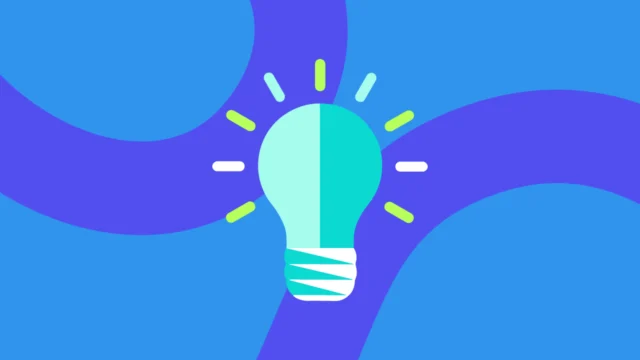Table of Contents
Employee rewards are more than just service anniversaries, employee-of-the-month perks, or the extra day off. Done right, a strategic employee rewards program is a critical part of the overall employee experience.
How are you doing rewards? No matter the approach, there are a few key questions businesses need to ask: How are employees responding? Are rewards helping you meet KPIs? Do they have a good ROI?
Often, it’s hard to track the payback on your rewards program. But with a strategic approach, that can change.
5 tips for strategic employee reward programs
Quick hit: Your employee rewards program is a critical part of your employee experience.
Here are 5 tips for strategic employee reward programs:
- Give employees meaningful reward options
- Make your employee reward program trackable
- Tie employee rewards to real-time recognition
- Incorporate team rewards into employee rewards
- Let employees reward each other
Give employees meaningful reward options
Variety is the spice of life – and of rewards. Take it from motivation guru Dan Ariely, who conducted a study of Israeli semiconductor workers where he offered different groups different rewards:
- No reward for Group 1
- A cash bonus for Group 2
- Free pizza for Group 3
- Compliments for Group 4
The end result? The pizza group performed best, with the compliment group coming in a close second. The cash bonus group came in dead last — lower even than Group 1, which received nothing at all.
Does that mean you should never reward employees with a monetary reward? No. It means this group really liked pizza!
The takeaway: Don’t guess what matters most to your particular employees. Let them choose from a variety of rewards to pick those that are most meaningful (and motivational!) for them.
Track your employee rewards program
You can’t optimize what you can’t measure. And it’s nearly impossible to measure the impact of a traditional, manual, or ad-hoc rewards program. So think about it — if you give someone a random gift or a shout-out at a team meeting, how do you measure productivity, morale, or impact on your bottom line?
A public recognition and rewards platform, however, offers tools for measuring your investment in rewards. Plus, when recognition and rewards are tied to skills or core values, you can track the number of times employees get recognized for a specific skill or value.
You can also track the relationship between the amount you spend on rewards and key metrics like engagement, retention, absenteeism, or productivity. This helps you see the before/after impact of your program.
Tie employee rewards to real-time recognition
Employee recognition is the employee engagement power tool. Unlike a pre-determined bonus, spontaneous recognition for great work isn’t something that an employee can anticipate. It reinforces positive behaviors in addition to driving great results. And, recognition connects the people giving and receiving praise.
Investing in employee recognition and rewards programs shows an employee their impact on a business over time, contributing to an employee’s sense of meaningful impact. So support recognition with small employee rewards. It only amplifies the power of both rewards and recognition.
Incorporate team rewards into employee rewards
Studies show that offering team rewards and experiences can produce more engaged, effective individuals. For example, the Journal of Business Research reported that rewarding a team boosted cooperation and performance.
“Group reward systems not only produce superior group performance – in most cases, they also produce the best-performing individuals.”
So connection to the team is a big factor in how much employees engage with their jobs. Rewarding the team for good work or including team experiences as a reward option can boost team-building and impact your organization in ways that rewarding individual team member accomplishments cannot.
Allow employees to reward each other
When combined, peer-to-peer recognition and employee rewards are incredibly powerful. While everyone likes to be rewarded by their manager, knowing co-workers respect you is equally motivating. Plus, if managers know about peer recognition and rewards, it grants them extra insight into what the team is doing well.
In one social science study, sets of employees were either given direct rewards, or given rewards to give to other teammates or a charitable organization. But here’s the twist: The group that got to give away the bonus substantially outperformed those that got the direct bonus.
So, the takeaway? Empowering employees to reward each other encourages higher performance.
Employee motivation, explained
When done wrong, even the best employee recognition strategy is a surprising demotivator. And working for a reward itself (rather than the joy of a job or based on a set of values) can cause serious harm to a company.
Take the old story of a Soviet Nail factory:
Leaders wanted to improve worker performance. So they started paying the workers based on the total weight of nails produced. After a while, the company noticed that nails were becoming bigger and bigger. So they decided to start paying employees based on the number of nails produced — at which point the nails became smaller and smaller.
The point? Offering rewards with a “tit-for-tat” approach can yield wasted effort and resources. Human behavior author and lecturer Alfie Kohn summed this idea up well when he said: “Do rewards motivate people? Absolutely. They motivate people to get the rewards.”
7 employee reward ideas
Now that you’ve got a high-level understanding of how to run strategic employee reward programs, let’s take a look at some custom reward ideas you can use in your program.
- Feature employees on your website or social media
- Share a (virtual) meal with food delivery
- Send a handwritten note
- Let them pick the playlist
- Pay for a monthly fitness subscription
- Subscribe to a stress relief app
- Offer mentorship
Feature employees on your website or social media ☀️
Bring on the public recognition! This reward lets the recipient shine in the spotlight with a feature on your company’s website or social media. (And definitely let the employee approve any photos before you share them.)
Share a (virtual) meal with food delivery
Once, team lunches and happy hours were the way to bond. And with video chat and food delivery, they still can be! Reward a team by delivering food to their homes for a virtual happy hour or lunch.
Send a handwritten note
Longing for the analog age? You’re not alone. In our digital age, handwritten letters signal an extra level of sincerity and intent. Send a personal thank-you to an employee singing their praises.
Let them pick the playlist
Do you start your weekly stand-ups with music? This one’s simple but undeniably pleasing — let the reward recipient pick the song, valid for one week of their choosing.
Pay for a monthly fitness subscription ♀️
For our physical, emotional, and mental health, there’s no stronger lift than regular exercise. Give the gift that keeps on giving with a gym or fitness gift subscription.
Subscribe to a stress relief app ♀️
These days, who doesn’t need one? This reward is valid for a subscription to a meditation, mindfulness, yoga, or other app. (Need more ideas? Check out our Complete Guide to Addressing Job Burnout.)
Offer mentorship
Don’t underestimate the power of learning and development (L&D)! Growth is a key pillar of the employee experience. Offer mentorship opportunities with yourself or other leaders in your company. Then, watch your employees — and their engagement — grow.
For more employee reward ideas, check out out our articles: 25 Reward Ideas for Remote Employees and Look What I Got! 5 Recent Reward Redemptions from WorkTango Tangoneers



